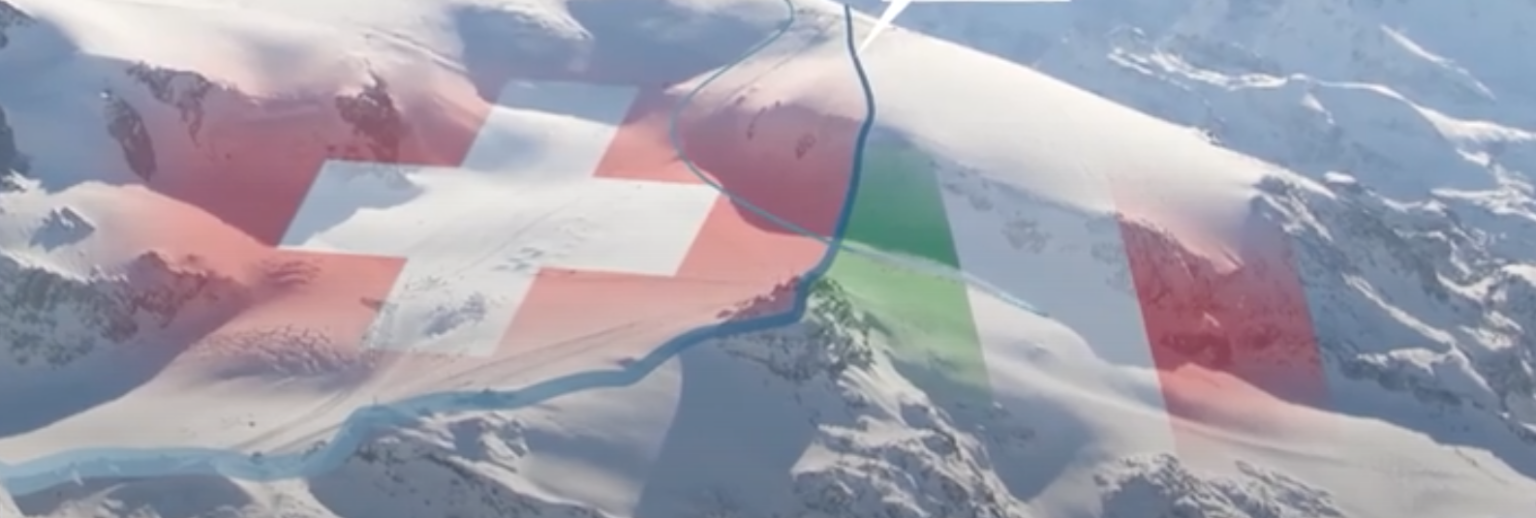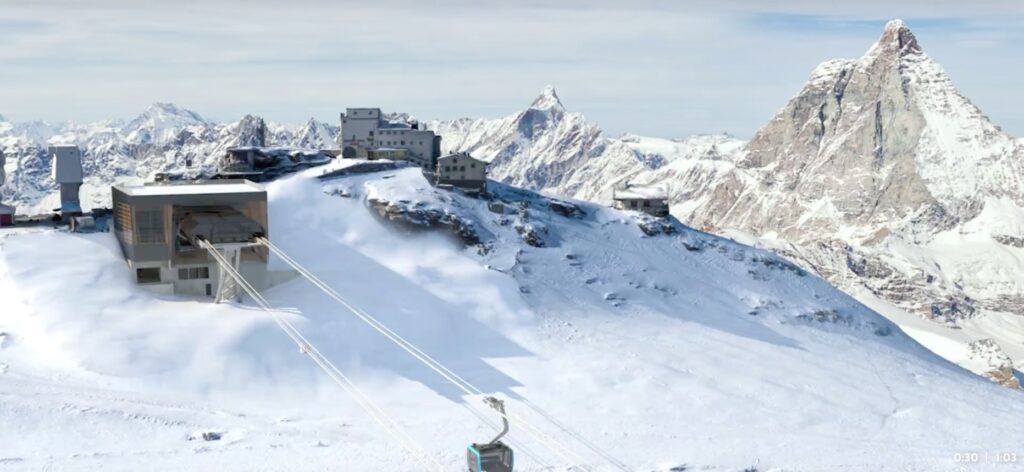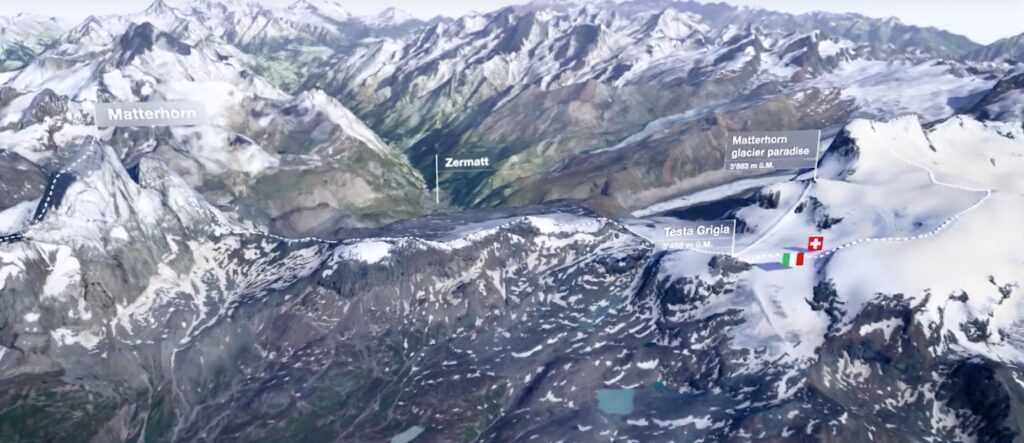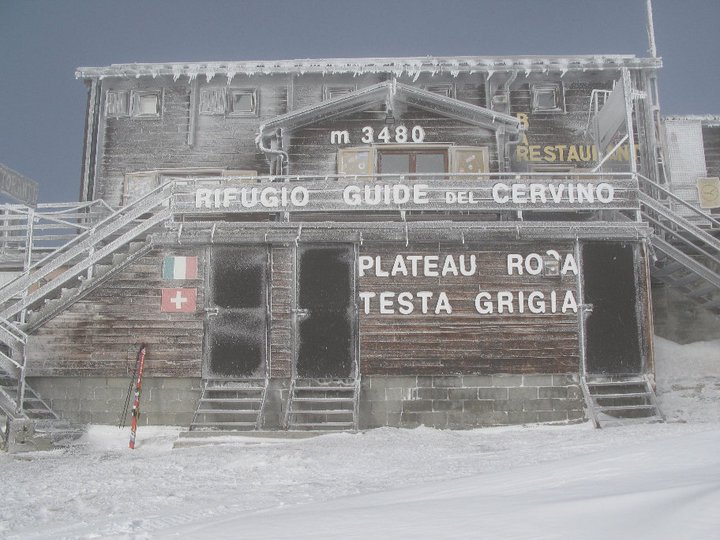Melting glacier shifts Italy-Switzerland border

The future of an Italian high-mountain refuge is in dispute as a glacier shift redraws the borderline, leaving the lodge on Swiss snow
Italy’s rustic hut Rifugio Guide del Cervino is technically two-thirds Swiss due to glacier movement.
Swiss ski resort Zermatt and Italian resort Cervinia share a border and together form the interconnected ski area Matterhorn Ski Paradise. Year-round skiing happens on the shared Plateau Rosa glacier, currently one of the only European glaciers with lifts still turning this summer after record temperature highs follow a winter of low precipitation.
The shifting of Alpine borderlines due to climate change has so far been uncontentious. Natural borders are constantly affected by flood, melt, drift, shift, crumble or dry up. Italy shares dozens of moving markers with Switzerland, as well as with Austria. And Switzerland, in turn, has thousands with its five neighbours.
Now, the melting Glacier has shifted the Italy-Switzerland border…
So, why is this moving border making news?
This is far from the politicised tensions that have played out on other glacial borders, such as the Southern Patagonian Ice Field between Chile and Argentina, or the Siachen Glacier in the Himalayas between India and Pakistan.
It is due to the Swiss cableway under construction and the Matterhorn Glacier Ride II station that will be located right next to where the modest mountain refuge currently sits on Testa Grigia at 3,458m on the Italy-Switzerland border.
While the exact coordinates of alpine borders are rarely questioned, generally considered just worthless shifts in land, this one has ‘economic value’. That is, both mountain towns have designs for this rustic hut (the Italians a refurb; the Swiss with bigger plans for a modern complex, explains Italian ski guide Luca in April 2022, pointing at the site).
The construction of the Matterhorn Glacier Ride II is the CHF45 million (46m euro) new extension in the bigger Matterhorn Alpine Crossing project, and is set to open spring 2023. The modern cableway will link the peak Matterhorn Glacier Paradise with the Snow Xperience Plateau Rosa. This modern Swiss mega project and cableway will be a feat of engineering, stretching 1.6km in suspension, with no use for masts, as it transports passengers between Testa Grigia up to 3,821m on the Klein Matterhorn. The Alpine Crossing is expected to be a big draw for non skiing tourists, too.
How are borders in this landscape determined?
While geographic features once set natural boundaries, borders are now determined following the watershed divide. A theoretical line is drawn across perennial snowfields and glaciers (now melting at double speed compared to 20 years ago from anthropogenic climate change). Generally, snow melt that flows to the south is Italian; a touch to the north and water runs down Swiss mountains. Melt causes the watershed line to shift, in turn moving territory lines.
High-altitude borders have only really become ‘visible’ in recent years, with differing national covid regulations. In April 2022 masks were still mandatory on lifts and in restaurants in Italy, for example, but skiing over the border in Zermatt, faces were unmasked. Tales from the mountains during the height of lockdowns tell us more, with restrictions varying wildly between town, state and country.
Is the Aosta Valley refuge in the Valais?
The ice that defines this international boundary has been melting for decades. We’re warned that by 2050, half of Alpine glaciers will have disappeared.
The idea for the ‘moving border’ originated in the 70s when the Austrian Federal Office of Metrology and Surveying (BEV) and the Italian Military Geographic Institute (IGM) realised that the boundary in the Ötztal Alps looked different to surveyed photographs in the archives. 50 years ago, it’s unlikely those involved knew how much climate change would accelerate.
In 2006 Italy and Austria agreed a mobile border agreement. Another in 2009 was reached by Italy and Switzerland. Each state pledged to accept the consequences of environmental changes, regardless of who came out ahead.
The case concerning the Rifugio Guides del Cervino is a different matter, say Italians. It involves more than just land. Buildings, lift stations etc. require new agreements. This is sure to be something that causes contention, elsewhere, in the future.
- Regarding this refuge, an agreement was made in Florence in November 2021, although the outcome won’t be made public until 2023. For now, it serves Italian wine and food (at Italian prices) under the guardianship of Italian Lucio Trucco.


In other news…
In other Zermatt-Cervinia news, the resorts will host the first ever cross-border World Cup ski race in October. Held on the Gran Becca course, newly designed by Olympic downhill champion Didier Défago, the start is above Zermatt (Gobba di Rollin) in Switzerland at 3800 metres while the finish is in Cervinia (Laghi Cime Bianche)
This is not just the highest downhill race in the World Cup calendar but also the first ever Alpine Ski World Cup on a glacier, (with two thirds of the course on the glacier). Two men’s downhill races will take place on 29 -30 October 2022, with the women’s races on 5-6 November 2022.



